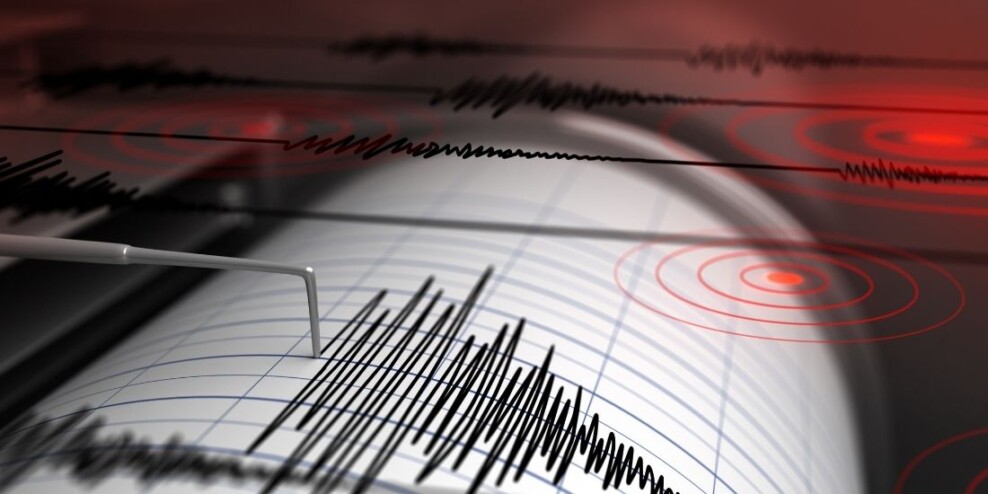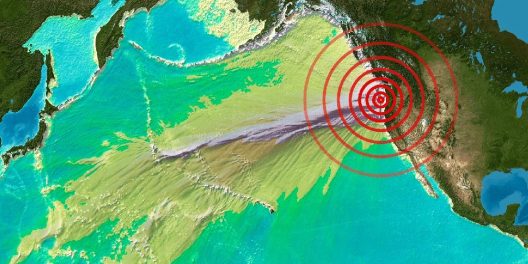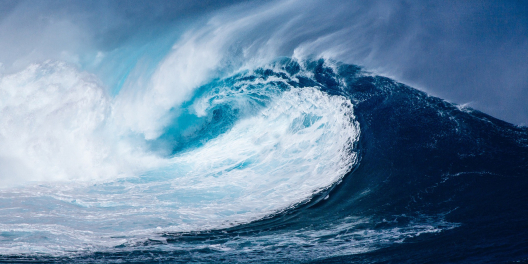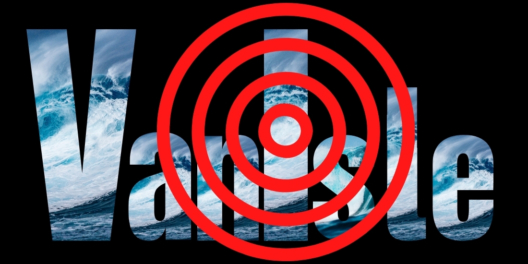The stopwatch on the computer screen reads four minutes and counting.
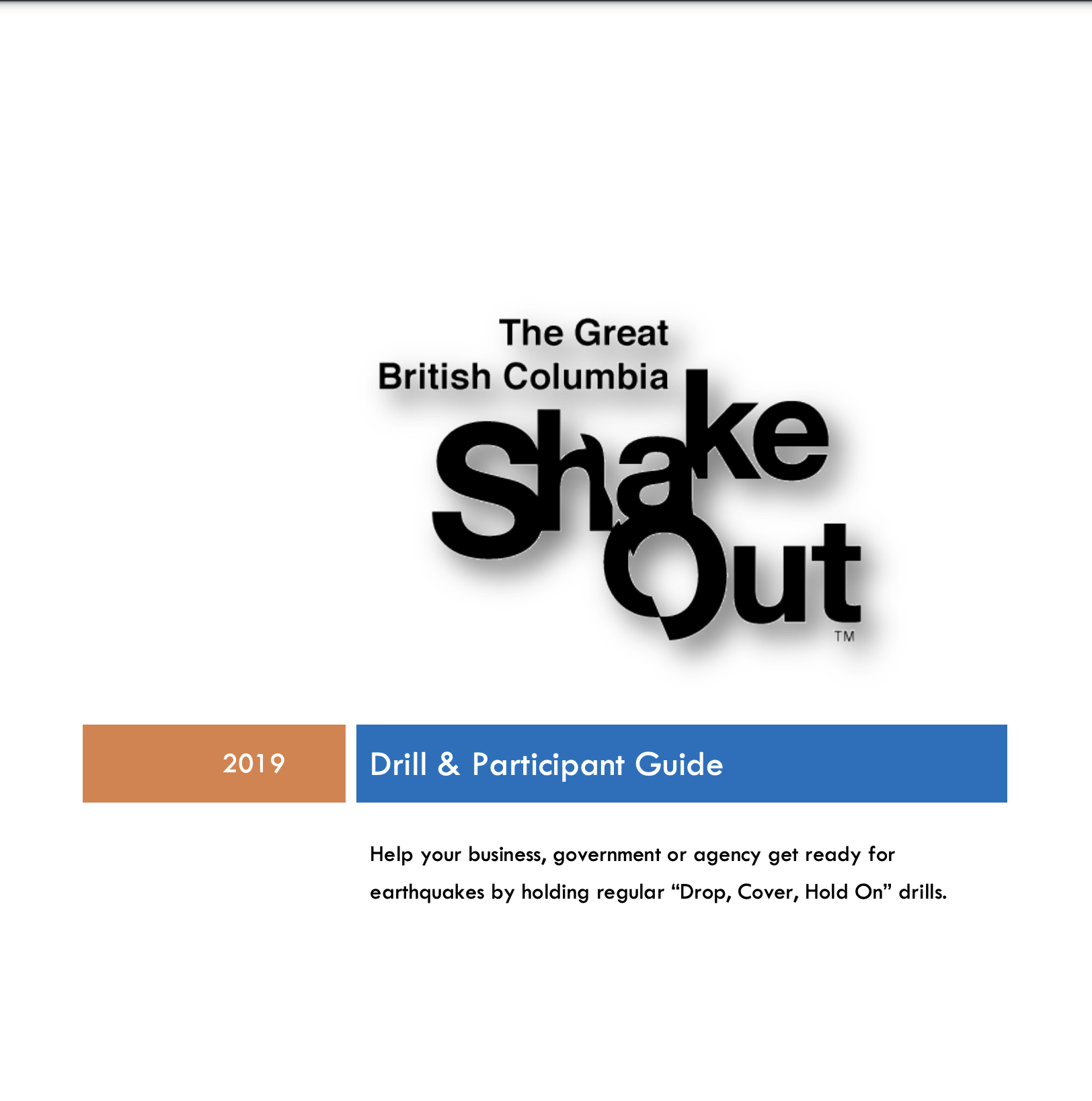
When the counter hits zero, crawl under a desk or table as part of a simulated earthquake emergency.
It’s important to practice, as foolish as you may feel pretending the ground is shaking while hiding under a desk. That’s because in a real earthquake, the flight response tends to kick in, and people need to practice finding a safe spot inside. It turns out most fatalities occur when people are hit by falling debris as they flee from buildings.
You won’t be practicing alone. You will be joining hundreds of thousands of other BC residents that will be practicing “Drop, Cover and Hold On.” That’s the simple but important takeaway message from the Great British Columbia Shake Out, an annual event held by the BC Earthquake Alliance.
Practicing earthquake safety is especially important for Islanders because our home is very seismically active.
On average, BC experiences 3,000 earthquakes annually, more than eight each day.

Credit: Geological Survey of Canada
Most of these seismic events are too mild to be felt by humans. Stand anywhere on Vancouver Island, then imagine the forces at play when two tectonic plates collide. That’s what’s happening between 15 and 45 km beneath your feet in what’s known as the Cascadia subduction zone. It stretches for 1000 km from the north end of the island to Cape Mendocino in California.
The Juan de Fuca plate is inching eastward, getting shoved beneath the North American plate, which is slowly crumbling under this pressure on its western edge.
Most of the time, the plates are held in place by friction, but tension slowly builds up. When the tension gets too high, rocks suddenly slip past each other releasing hundreds of years of pent-up tectonic energy. The result is a mega-thrust earthquake.
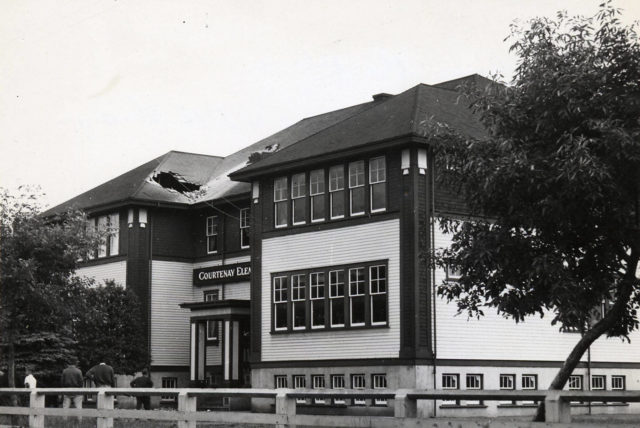
Credit: Courtenay and District Museum
They can be as violent as the name suggest. Back in 1946, the Comox Valley was rattled hard by a magnitude 7.3 earthquake, to date the 7th largest ever recorded in Canada.
In recent years, the massively destructive earthquakes in Chile (2010) and Japan (2011) resulted from mega thrusts. The last time one of these giant earthquakes rocked Cascadia was more than 300 years ago when a magnitude 9 unleashed its fury on Jan. 26, 1700, nearly 80 years before Captain James Cook sailed into Nootka Sound.
“There would have been widespread landslides, tsunamis, slumping and damage to buildings. We know that the tsunamis wiped out the winter village of the Pacheena Bay people,” said Alison Bird, an earthquake seismologist with Natural Resources Canada, in a story for the Comox Valley Collective.
Over the past 3,500 years, there have been an estimated seven of these megathrust events in Cascadia. So that’s one every 400 to 600 years, and when you do the math, it means we are on the cusp of another big one.
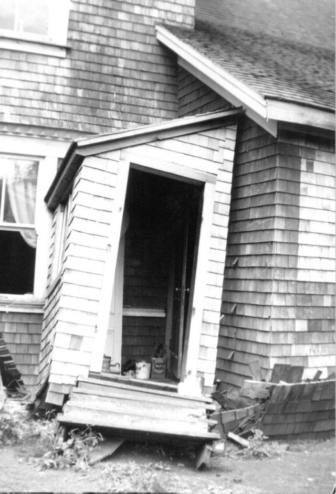
Credit: Comox Archives and Museum
A lot has changed since the last big one in 1700. The population in the Pacific Northwest has grown from around an estimated 500,000 to over 13 million, and we’ve built lots of buildings, highways and infrastructure over the 300 plus years. That means the possibility for widespread damage and loss of life is also that much greater.
That’s why seismologists like Bird and her colleagues study the Cascadia subduction zone.
They have hundreds of seismometers and GPS units scattered along the west coast and as far east as Penticton. They use these monitors to detect deep underground plate movements and the smallest of tremors. Their instruments transmit the data instantaneously to NRCAN’s offices in Victoria and Ottawa.
Bird is particularly interested in monitoring what is known as episodic tremor and slip (ETS,) a phenomenon that occurs deep in the earth along the fault. Friction locks the fault together for roughly 15 months, followed by a period lasting several weeks during which there are a bunch of small fault slips measuring just centimetres, but accompanied by tremors.
“As the stress increases, an ETS event may provide the additional stress needed to overcome the friction on a fault, triggering a great earthquake,” Bird says.
While scientists can monitor the frequency of these minute plate movements, they don’t have a scientific crystal ball to predict accurately where and when earthquakes will occur. Bird says the large but infrequent megathrust earthquakes tend to be the sexy ones that get all the media attention. However, crustal earthquakes (caused by shallow ruptures within the North American plate) like the one that hit the Comox Valley in 1946 are much more likely.
The 75 years since the Comox earthquake have allowed memories to fade. So it’s easy for Islanders to get lulled into a false sense of security.
But some things have improved. For example, BC’s building code now requires earthquake protections, schools are being retrofitted to make them safer and earthquake education is now part of the school curriculum.
And people are practicing. One million British Columbians took part in the last Shake Out; one in every five of the province’s 5 million residents.
“It can be challenging to get people to take it seriously, but we definitely need a culture of earthquake preparedness,” Bird says. “People need to be prepared for the big one.”
So remember, practice your “Drop, Cover and Hold On.”
